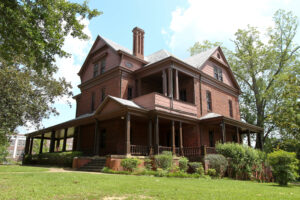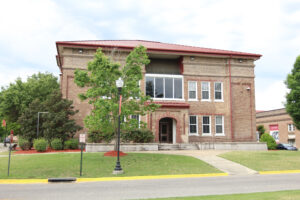
Walking around the campus of Tuskegee University, one cannot help but notice the many vacant buildings surrounding them. Students can be seen walking in and out of Thompkins Hall, while the architecture of Carnegie Hall stands idly by, waiting to be used. The Yard, which is notably the confluence of the campus, is surrounded by buildings that are both online and offline. The campus is therefore a mixture of buildings; buildings that are alive, full of students and faculty, and the skeleton of what the vacant buildings used to be. This is extremely alarming due to the rich history of Tuskegee University.
In an interview with Dr. Kwesi Daniels, Interim Chair of the Architecture Department and a Tuskegee University Alumnus, he expresses the importance of preserving the historical buildings on campus. He has spent about ten years teaching architecture and has proposed the “need to address historical buildings on campus” around five years ago. As Dr. Daniels puts it, Black architects were “never emphasized,” indicating that school curricula have often excluded prominent Black architects. Yet, Tuskegee University has a rich share in the history of Black architects, which is embedded into the physical buildings on campus. Dr. Daniels identifies the campus as a “learning tool,” where students can not only learn the rich history of Tuskegee University but also the impact of Black Architects. As a professor, he employs a “learning by doing” mindset, reminiscent of Booker T. Washington’s philosophy. Dr. Daniels does not see buildings merely as a physical object made of brick and stone, but as a record, a marker of one’s identity: “when you lose a building, you lose that record.” When you understand and recognize the history of a building, you have a connection to its past. For a Historically Black College or University (HBCU) such as Tuskegee University, history is one of the most important aspects; to be a student at the historically-rich Tuskegee University means to carry on the legacy of those who came before, and the buildings are a tangible manifestation of that connection.

To illustrate this concept, Dr. Daniels shares a moving memory he has of Wilcox D building. He recalls when he was a student he heard and saw his fellow classmates complete architecture and engineering work therein. Dr. Daniels says he could “feel the building screaming ‘use me’,” and that these sounds were the “sound of Tuskegee.” Wilcox D is not being used today; thus, Dr. Daniel says “Tuskegee has not heard her sound in so long.” It becomes expressively clear that there is a fundamental relationship between these historical buildings and Tuskegee University students. Booker T. Washington’s vision for the university is embodied into the very structure of the campus, and students communicate his vision when they use and learn inside of the buildings.
Dr. Daniels acknowledges the work that is being done to renovate and preserve historical buildings on campus. None of the buildings on campus are past the point of ability to be renovated but some buildings are in a dire situation such as Carnegie Hall and Thrasher Hall. Sage Hall is currently on slate to be renovated with a planned opening date of Fall 2022. Additionally, there are several preservation opportunities for interested students to take part in, including a Historic Preservation minor and a partnership between Tuskegee University and the University of Pennsylvania. Thus, students can take part in efforts to preserve and restore historical buildings so that they can be utilized once again. Dr. Daniels believes the best way to preserve Tuskegee University’s historical significance is through its historical buildings. According to him, Tuskegee University is a tangible testimony that “Black people can create their own.” We can continue to honor and preserve Booker T. Washington’s legacy by restoring historical buildings that exemplify his philosophy. History is not dead, but living; and the history of Tuskegee University lives on through such remembrance and preservation.
